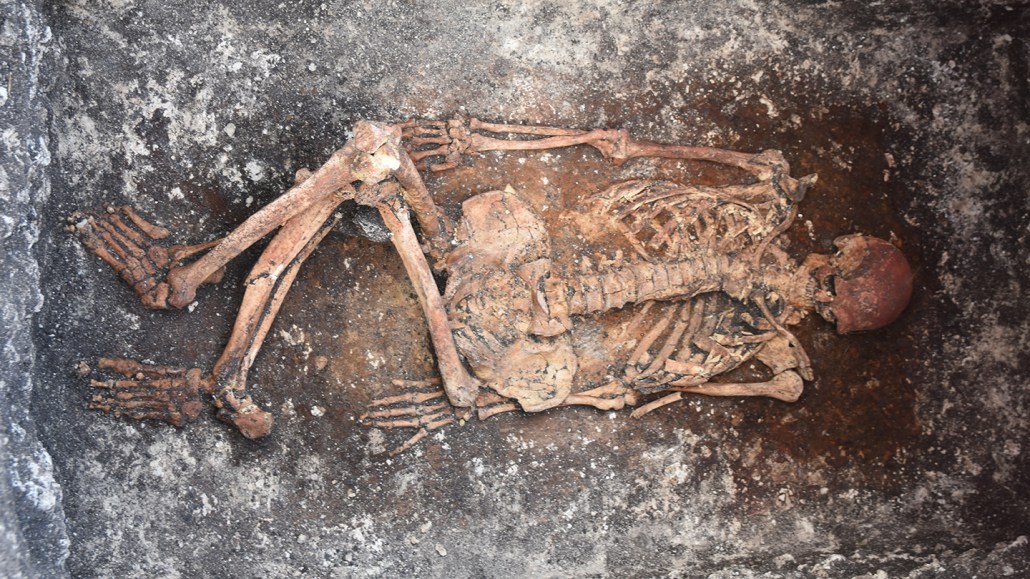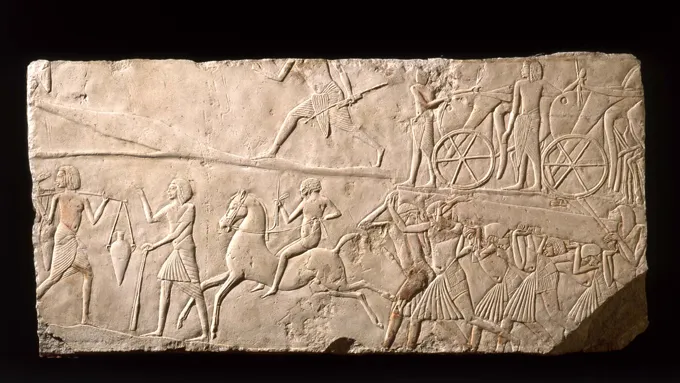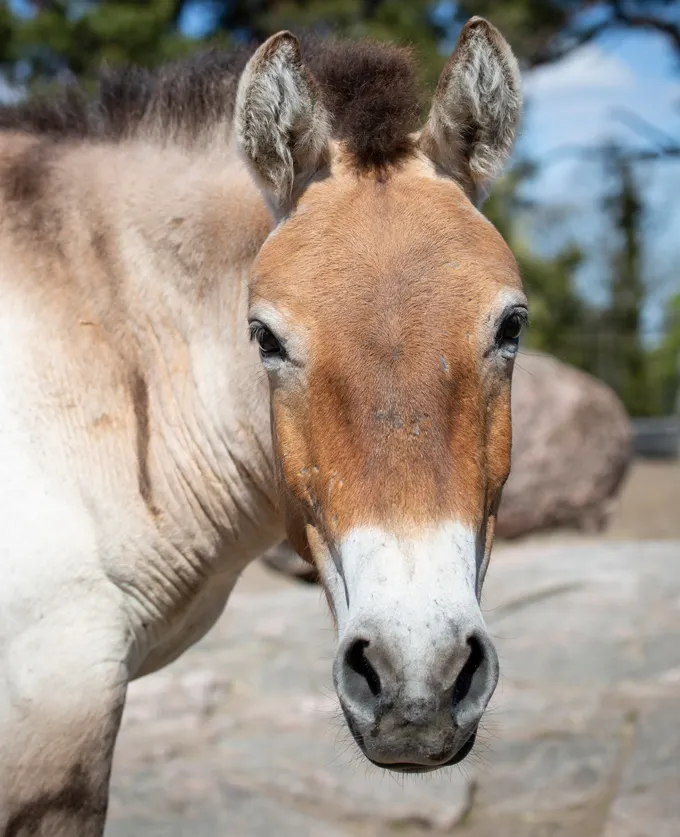The Yamnaya may have been the world’s earliest known horseback riders
Excavated human skeletons indicate that the Yamnaya rode horses around 5,000 years ago

Several skeletons from the ancient Yamnaya people, including the one shown here, bear signs that they may have ridden horses around 5,000 years ago, a new study suggests. That would make them the earliest known horseback riders.
Michał Podsiadło
- More than 2 years ago
WASHINGTON — The tale of the first horseback riders may be written on the bones of the ancient Yamnaya people.
Five excavated skeletons dated to about 3000 to 2500 B.C. show clear signs of physical stress that hint these Yamnaya individuals may have frequently ridden horses, researchers reported March 3 at the American Association for the Advancement of Science Annual Meeting and in Science Advances. That makes the Yamnaya the earliest humans identified as likely horseback riders so far.
Five thousand years ago, the Yamnaya migrated widely, spreading Indo-European languages and altering the human gene pool across Europe and Asia (SN: 11/15/17; SN: 9/5/19). Their travels eventually stretched between modern-day Hungary and Mongolia, roughly 4,500 kilometers, and are thought to have taken place over only a couple of centuries.
“In many ways, [the Yamnaya] changed the history of Eurasia,” says archaeologist Volker Heyd of the University of Helsinki.
Horse domestication became widely established around 3500 B.C., probably for milk and meat (SN: 7/6/17). Some researchers have suggested the Botai people in modern-day Kazakhstan started riding horses during that time, but that’s debated (SN: 3/5/09). The Yamnaya had horses as well, and archaeologists have speculated that the people probably rode them, but evidence was lacking.
But the oldest known depictions of horseback riding are from about 2000 B.C. Complicating efforts to determine when the behavior emerged, possible riding gear would have been made of long-decayed natural materials, and scientists rarely, if ever, find complete horse skeletons from that time.

Heyd and colleagues weren’t seeking evidence of horsemanship. They were working on a massive project called the Yamnaya Impact on Prehistoric Europe to understand every aspect of the people’s lives.
While assessing over 200 human skeletons excavated from countries including Romania, Bulgaria and Hungary, bioanthropologist Martin Trautmann noticed that one individual’s bones carried distinct traits on the femur and elsewhere that he’d seen before. He immediately suspected horseback riding.
“It was just kind of a surprise,” says Trautmann, also of the University of Helsinki.
If it were a one-off case, he says he would have dismissed it. But as he continued analyzing skeletons, he noticed that several had the same traits.
Trautmann, Heyd and colleagues assessed all the skeletons for the presence of six physical signs of horseback riding that have been documented in previous research, a constellation of traits dubbed horsemanship syndrome. These signs included pelvis and femur marks that could have come from the biomechanical stress of sitting with spread legs while holding onto a horse, as well as healed vertebrae damage from injuries that could have come from falling off. The team also created a scoring system to account for the skeletal traits’ severity, preservation and relative importance.
“Bones are living tissue,” Trautmann says. “So they react to any type of environmental stimulus.”
The team deemed five Yamnaya male individuals as frequent horseback riders because they had four or more signs of horsemanship. Nine other Yamnaya individuals probably rode horses, but the researchers were less confident because the skeletons each displayed only three markers.

“Hypothetically speaking, it’s very logical,” says bioarchaeologist Maria Mednikova of the Russian Academy of Sciences in Moscow, who was not involved in the new study. The Yamnaya were very close to horses, she says, so at some point, they probably experimented with riding.
She now plans to check for the horse-riding traits in the Yamnaya skeletons she has access to. “The human skeletal system is like a book — if you have some knowledge, you can read it,” Mednikova says.
Archaeologist Ursula Brosseder, who also was not involved in the work, warns not to interpret this finding as equestrianism reaching its full bloom within the Yamnaya culture. Brosseder, formerly of the University of Bonn in Germany, sees the paper’s discovery as humans still figuring out what they could do with horses as part of early domestication.
As for Heyd, he says he has long suspected that the Yamnaya rode horses, considering that they had the animals and expanded so rapidly across such a large area. “Now, we have proof.”







